(first posted 1/21/2019) This week, let’s spin the clock back 60 years and check out the January 1959 issue of Motor Trend, which they dubbed their “World Show Issue!” Coverage took a look at all the core automotive segments (no trucks, sorry, those were just workhorses back then) and the broad range of models from an array of countries all trying to woo the American car buyer. The split that would impact Detroit for decades to come is also plain to see, as big, dramatically styled showboats were the primary domestic offerings, while imports served up an array of more practical and sporty machines.
Both the front and back covers were emblazoned with images of the array of cars that would covered inside the issue. Back in the days before easy online searches, Motor Trend was one of the best sources for details on cars for the budding car enthusiast. Annual subscriptions cost $3.50 ($30 adjusted), so the issues weren’t the cheap throwaways that we think of today when it comes to magazines (Motor Trend now costs $10 for an annual subscription). Such are the woes of the publishing world….
Motor Trend was also a good source of information on “new” engineering features to be found on cars, though in 1959 at least, there really wasn’t much consequential news to cover. From Detroit at least, engineering features really were more about comfort and style than control, efficiency, or safety.
Let’s see: swiveling seats, “wide tracks,” revised suspensions for cushier rides, smoother automatic transmissions, trying to extract more “efficiency” from big motors towing heavy cars–but minimal emphasis on improvements in subpar brakes. Yep, that was automotive innovation Detroit-style circa 1959.
Soft lighting, romance and a white car–perhaps this was Buick’s attempt to downplay the “angry” new look of its ’59 design, with the “frowning” headlights and “frowning” rear fins.
VW meanwhile was focusing on accessories. While the Bug’s appearance seemed never changing, the cars could be personalized with low-cost add-ons, a smart marketing approach to broaden the brand’s appeal.
Personalization was also a buzzword at Chevrolet, through a huge array of choices in models, engines, colors, trim and accessories. Hard to envision this large, bat-winged Biscayne as much of an “economy” model though …
Oddly, Pontiac’s ad in the January 1959 Motor Trend also emphasized economy rather than style, though at least there was mention of the new wide-track stance.
One of the more bizarre ads was from Skoda, touting its steel body and compact dimensions. However, in America circa 1959, any car from behind the Iron Curtain would have been a tough sale, no matter its attributes.
And of course it is funny to see a brake ad actually touting the benefits of asbestos! Ah yes, 1959 when the public was mesmerized by the “progress” of “man made innovation,” without a care in the world as to the environmental or health ramifications….though as we gleefully hurtle toward 5G mobile, for example, an argument could be made that history is repeating.
Here was a “new” compact car from a domestic maker in 1959. Pity that Studebaker was seen as “damaged goods” but much of the buying public at this time.
Fabulous then, fabulous now–the crown jewels of Mercedes-Benz were among the most impressive cars available.
This practical little wagon pre-dates the small economy wagons that helped Japanese makes gain a foothold in the American market a few decades later.
Talk about an unusual “lifestyle” ad–no product beauty shots, just a tough looking guy with his bulldog, an expression of the “no nonsense” engineering-oriented types that Mopar was known to attract.
One of the pillars of the Auto Union group, the DKW was actually one of the pre-cursors to today’s Audi–in fact, it accounts for one of the four “rings” in the Audi logo, the others being Horch, Wanderer and of course Audi.
Harley Davidson got in on the advertising action as well–after all, many car enthusiasts probably also got into motorcycles.
Saab only ponied up for a small 1/4 page ad, but Motor Trend probably represented a wise use of their advertising dollars given the car fanatic composition of the magazine’s readership.
Another grouping of struggling Automotive brands, this time British–Rootes was ultimately sold to Chrysler in 1967 and then the battered remnants went to Peugeot in 1979 as Chrysler teetered on the edge of bankruptcy.
The Citroen was arguably the most advanced mass market car available anywhere in 1959. Likely too edgy for many Americans, it was still a quirky triumph of engineering with uniquely French attributes.
Based on this glamorous full color ad on the inside back cover of the January 1959 Motor Trend, it was hard to fathom that the DeSoto brand would be gone within a few years.
Be sure to check back tomorrow to see Motor Trend‘s run down on 1959 Family Cars and Luxury Cars, segments that included most of the output from Detroit’s Big Three.




























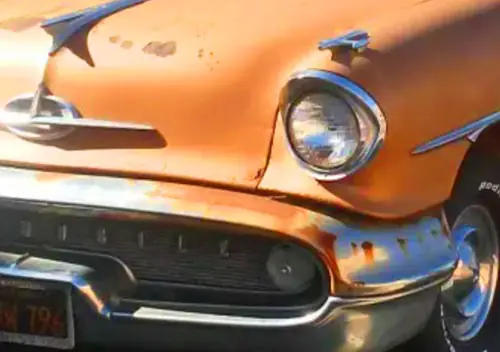
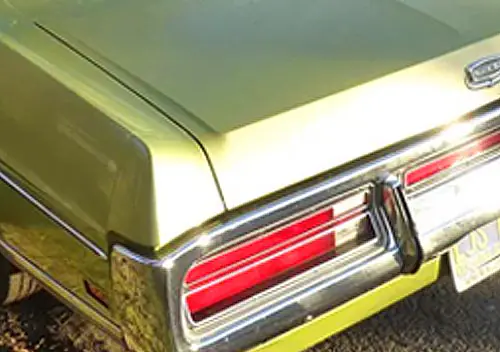
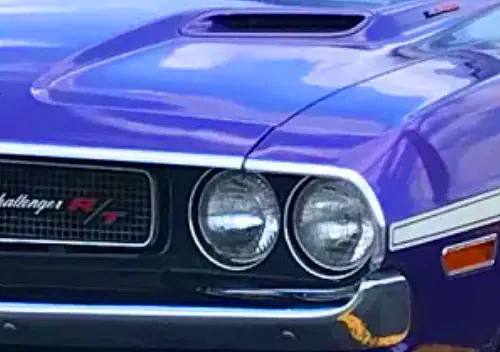

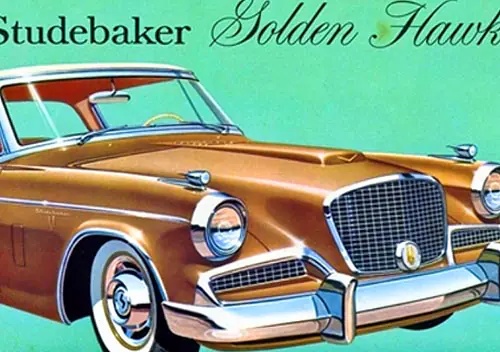
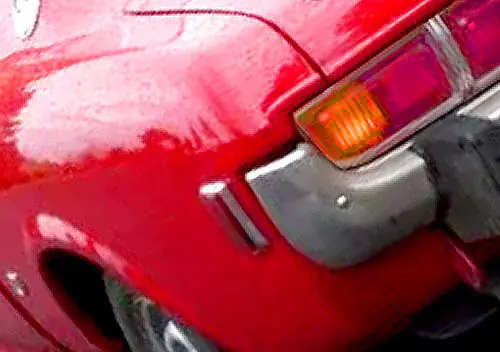
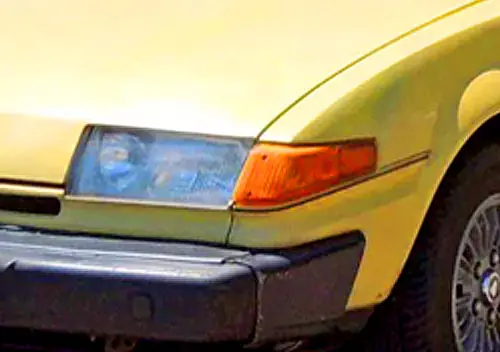
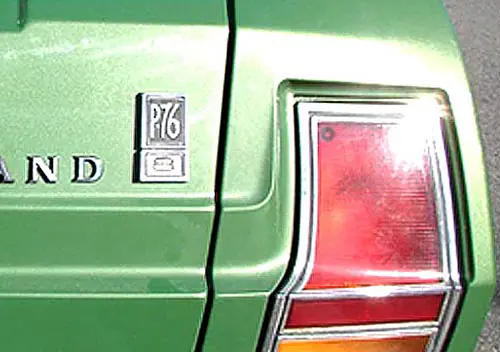
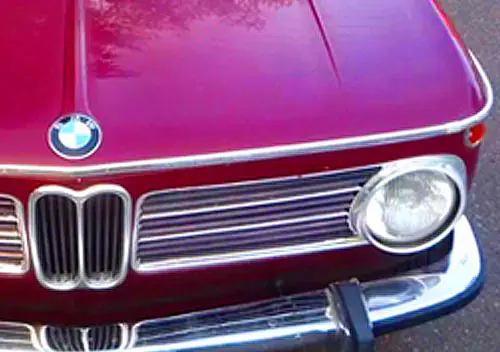
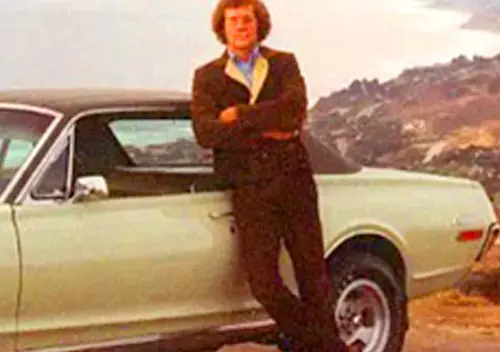

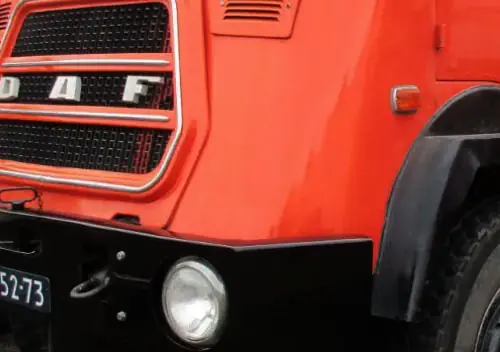
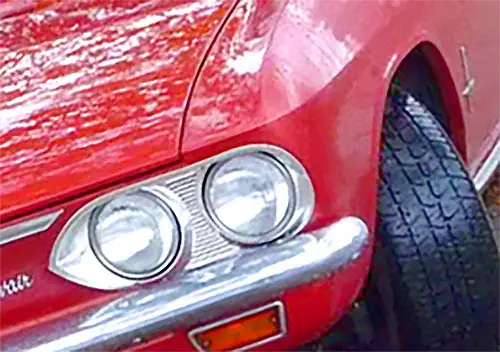
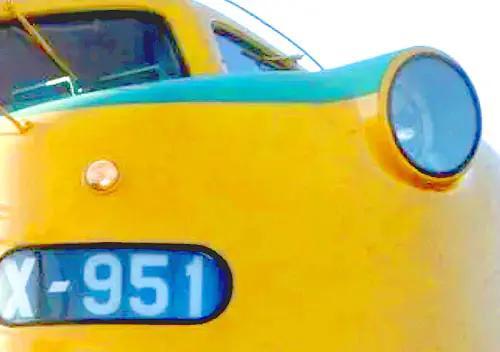
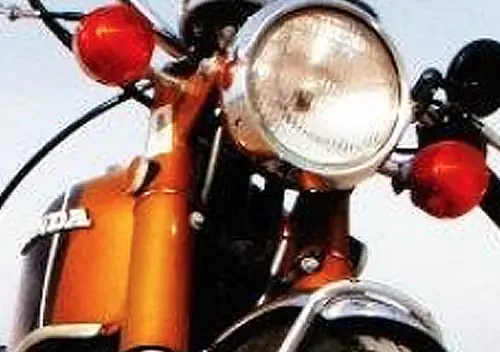
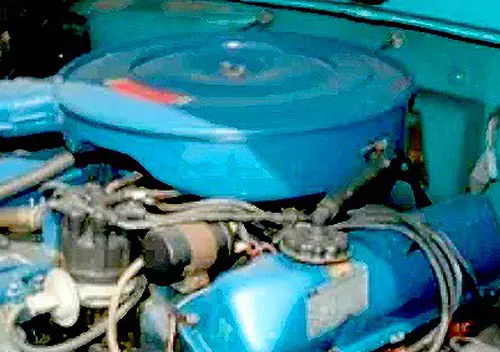



I remember driving home from Penn State and seeing the ’59 Buicks on a carrier. Quite lovely cars in my ’59 eyes and opinion.Cars were just more exciting back then , not just an applicance
I think I’d pick an MGA in 59 🙂
But not on a day like today, I don’t think even a new MGA would be very happy at -20C
And that lady in the Triumph wagon is saying “You’d better be writing a darn good apology for buying such a stupid little car for use in America!”
Minus 30°C wind chill in Toronto! Minus 37°C in Ottawa.
I will NOT post a picture of daffodils today at English Bay in Vancouver. Really, I would never do that – it would be a cheap shot.
Damn! One slipped through! 🙂
Damn daffodils.
Could be worse, we could be in Winterpeg!
Question on the Chevy rear suspension: the article describes a track rod to control body lean, and the picture shows what looks like a track rod (Panhard Rod) described as an anti-sway bar. I think of a track/Panhard rod as purely for lateral axle location. Sloppy reporting, or did these cars actually offer a rear sway bar?
Thanks for including the Skoda ad. We had Triumph sedans and DKW’s in my town growing up in this era, my parents had a Hillman Minx, and Citroen’s and Saab’s were even more common, though a rarer sight than a Studebaker or DeSoto. But I didn’t recall ever seeing a Skoda here. I never knew they were imported
Sloppy reporting. True antiroll (also called antisway) bars were/are lateral torsion bars set up to resist differing vertical movements of the two sides of the rear suspension, limiting body lean. A Panhard bar resists horizontal movement of the solid axle relative to the chassis (it was not required on cars with rigid leaf springs) but permits unrestricted vertical motion including lean. Antiroll bars were rare on GM cars until the Olds 4-4-2 in the mid-1960s. Not even the contemporary Pontiac GTO had one.
Good explanation of the rear antisway bar. Supposedly, the manufacturers’ claim for not having them was that installing one would make the handling too ‘twitchy’ for American drivers. Oddly, I never recalled seeing any complaints about any review of an Oldsmobile with one installed.
In fact, the only thing I remember was how any Olds with the handling package that included the rear antisway bar was usually the best handling when compared with all the others that lacked the bar.
I had a 63 Biscayne built for economical highway cruising 6 cyl, overdrive, larger diameter wheels (I think 15″) Took awhile but it would cruise all day at 80 mph if the cops would let me.
Also my first car was 1959 Ford, which was the worst car I ever had. Then again, I only paid $100 for it.
It could be interesting to compare that issue of Motor Trend with other car magazines of the same mouth like Road and Track, Autocar and Wheels magazine.
I have a 59 Earls court edition of a British motor trade magazine at home, oh wait I lent those out, immaterial I’m 900kms and a ferry trip from them but I’ll check when I get back.
The De Soto ad looks like it was photographed at the entrance to Meadowbrook Hall in Rochester Hills, Michigan. It was an estate built by the widow of one of the Dodge Brothers, so somewhat appropriate.
I love Tom McCahill, but I don’t believe that 389 cu in Pontiac got 21.7 mpg on a coast in to coast trip.
“I love Tom McCahill, but I don’t believe that 389 cu in Pontiac got 21.7 mpg on a coast in to coast trip.”
They don’t say how they reached that 40 mph average, but I suspect that they spent a lot of time at 45-50 mph in a car with a 3 speed stick and a really tall axle.
The Pontiac in this test was equipped with the Tempest 420E V-8. This was a no-cost option featuring a 389 with a much lower compression ratio than the standard 2 bbl. 389. Made 215 HP to 280 for the standard 2 bbl. Available with Hydra-Matic only. With tall gearing and judicious driving, the test driver may have been able to squeeze out 21 mpg on the run.
I think Pontiac looked the best of the ’59 GM offerings. The wide track, split grill, nice interior all worked better than its GM cousins, each which seemed to have a peculiar styling quirk. Chevy’s bat wings, Buicks angry face, Caddy’s fins, Olds’ widely spaced headlights – distinctive yes, but weird.
^^^^September ’59, a year-end car with the 420E, Hydra-Matic, the $74 heater, and basically nothing else:
The interstate highway system was still in its infancy in 1959. A fair amount of travel – even over longer distances – involved driving on two-lane roads where tractor trailers and older vehicles limited the top speed to 45-50 mph.
With a properly equipped car, and a careful driver, I’ll bet this could be achieved. But not on an interstate highway at even 55 mph, let alone 70-75 mph.
Wow, great feature! As a 1959 model myself, I have a special affinity for these.
So many great choices. The Chrysler products were the Forward Look finally perfected (mostly). My 59 Fury sedan was a great road car, and the DeSoto was DeLovely indeed. Loved the guy with his bulldog, that was the image of almost every Mopar owner of my personal experience as a kid.
Evidently there was nothing noteworthy coming from Rambler, as they got no mention beyond the picture. The 59 Lark was a really nicely outfitted little car in its higher Regal trim. I think it was just cute as a button, but maybe that’s just me.
I had no idea Skoda was ever here. And I think this was a year or two before DKW started being distributed by Studebaker. As great as the Mercedes connection was for them, the DKW experience was a disaster for Studebaker dealers here in the US. They should have taken on the Hillman!
Looks like the cars came mostly in two sizes, stubby and overhang.
Pack of lies from Rootes group, the little 1500 engine is screaming at 60 mph, I know I have one, and not very roomy inside in reality, tough as old boots yep they got that right,
The Rapier had disc front brakes and handled well, But of course this is advertising the truth has nothing to do with it.
Don’t those ‘59 models look just like 3/4 size Studebakers? I think Loewy had a hand in the design
Agree that the proportions of the Sunbeam Rapier make it the best looking Studebaker that wasn’t really a Studebaker. Well, after the original 1953 Starliner, anyway. Imagine seeing a restored one tooling around on the streets today.
Such memories. I was very proud to be 8 years old with a new ‘59 Dodge Coronet in the driveway. Kept it until ‘67, and it was pretty used up. Learning how to park it was helpful for future cars.
A lot of intriguing things in this article; thanks. That Mercury color-changing speedometer is particularly cool.
Remember seeing a Skoda parked regularly on a street less than 2 blocks from where I lived back in the early 60’s. It lacked the upper grille, I think it must have been a later model. The car was medium blue with a white top and yellowish wide white walls. A red Triumph Estate wagon had a home in a driveway 3 doors west and across the street from me at about the same time. I was friends with the kid whose father owned it. My father had by then traded in his Packard for a used 1958 Ford Country Sedan with the 332 C.I.D. FE engine. Never saw a Skoda or a Triumph Estate Wagon before or since.
I never knew Skodas were sold here (US) either…some my relatives in Slovakia drive them…and some also work in steel fabrication in Kosice…so the ad mentioning steel (though also mentioning aluminum blocks, which probably were pretty new 60 years ago). The plant is owned by US Steel now, I believe.
Though my mother’s family has been in the US for almost 100 years, most of my relatives on her side still live in Slovakia, as she and her brother (and their desendants) are the only ones left in the US.
I recall that a lot of electronics I saw over there in the 90’s carried the “Tesla” name….though Tesla himself was popular in the US in the 1920’s, he seems to have been forgotten here for decades…but over there, I think his name has been well known (even outside engineering circles) throughout.
That Skoda had a new body style for 59 but underneath it they changed nothing, the backbone frame and power train had an afterlife in NZ with a boxy home masde looking utility body on top called a Trekka, Skoda had gone rear engine by then but supplied the running gear one was rebuilt using 49/50 Skoda parts from the tip, everything fitted.
So the Triumph Estate Wagon was good for 60K between overhauls? Puts me in mind of this:
https://www.curbsideclassic.com/uncategorized/cc-cinema-mid-50s-bmc-cars-exceed-expectations-by-surviving-25k-miles-at-60mph-on-the-autobahn/
FWIW, I had a 1959 Pontiac Bonneville 4 door hard top as pictured in the ad. That was a boat and my girlfriend at the time loved it. A draft notice for a all expense paid vacation in Vietnam in 1964 had me part with the car and the girlfriend.
Wow, what a variety of imports!
The cost-minded salesman in the Chevy ad who paid his own car and expenses would probably go for a used Prius were he in the same position and life stage 60 years later.
Strange that Saab’s ad agency made no attempt to smooth away that weird rear fender joint that every 92-3-5-6 had, the one that looked like the leftover shut from the four-door model on a car that never had a four-door model.
Regarding the brakes – Buick’s finned, aluminum drum brakes were considered a real improvement in brakes. I don’t know if any other makers followed suit, but they gave Buick a reputation for good brakes.
Interesting that Chrysler spent that much on the DeSoto ad, given that the marque’s line-up would be seriously pared back the very next year, and then Desoto itself would be gone after a very brief run of 1961 models.
The Hillman being the best under $2,000 buy is a laugh .
I love LBC’s but unlike almost any other brand, the VW was designed to be run all day, all night flat out, they mentioned this in the adverts and owner’s manual too .
I’m still driving my battered ’59VW Beetle flat out across the Desert, it goes and goes…..
So many of these are beautiful .
-Nate
I love reading vintage car mags from this era. The writing would get bolder and snarkier as the 60s wore on, and arguably more interesting, but there’s something so quaint about these Jet Age articles. It’s easy to get caught up in the authors’ starry-eyed gaze at humanity’s technological prowess.
Speaking of which, I’m a little dumbfounded by the 5G comment. What’s the implication? Cell signals are melting our brains?
When 5G (fifth-generation) cellular networks were first being deployed, there was quite a bit of talk, news columns, and research about whether the high-speed equipment or radiation etc. was potentially harmful to humans. Years later, the NIH published a study of, well, all those studies which (unsurprisingly) concluded:
In conclusion, the discussion around 5G as a significant human health risk in the peer-reviewed literature was initially largely driven by authors from, or with links to, various campaigning organizations and linked publications directly to appeals for a moratorium on 5G. Commentaries and letters are personal opinions and are rarely based upon a methodological appraisal of the evidence, but the narrative of the initial period covered in the current review, relied mostly on reviews of lower methodological quality compared, with the subsequently published reviews by independent researchers and researchers with links to industry. It is likely that articles in the popular media, therefore, were influenced more heavily by the initial advocacy publications than by the later higher quality contributions.
https://pmc.ncbi.nlm.nih.gov/articles/PMC9806221/
Regarding Asbestos,
“And of course it is funny to see a brake ad actually touting the benefits of asbestos! ”
Once upon a time it was a wonder fiber! It really did many things well, vinyl flooring was more resistant to breakage and wear, roofing held up better and brakes of all things were better. Remember before the early 90s one used to surface brake rotors. Now you just chuck them and put on new ones, they seem to warp easier. Asbestos seemed to be more rotor friendly. Excepting for all it’s great properties, it killed people. So no I’m not advocating a return, just that it was a great product with a fatal flaw.
Here’s another gem from the past: DDT wallpaper with Disney characters:
https://sciencehistory.pastperfectonline.com/webobject/C7408294-233C-4595-9084-922871271293
it was a great product with a fatal flaw.
You could say the same about lead, and a few other ones.
There’s definitely a bit of artistic licence being used in the Hillman ad, in the metal they are stubbier lengthways and taller. Also another appearance for the tiny British car ad people. In fifties advertising rendering these tiny people make thesmallest most cramped cars around, I’m thinking Austin A30 here, look roomy and generous. When I inherited my Dad’s fifties Autocar mags these ad made me laugh out loud.
I’m always amused by the “All-New” proclamation back then in ads for cars that obviously aren’t. If you’re even mildly interested in cars you can see that Desoto’s basically a nose and tail job. From there it’s not hard to imagine much of what’s unseen would be carrover too. All-new? No way.
It’s a bit hard when your parents try and bring you up to tell the truth, then you see grown-ups tell lies like this. Then Dad said “That’s business.” As if that somehow excused it.
And now we have truth-in-advertising laws.
While it wasn’t “all-new,” the 1959 DeSoto, along with other 1959 Chrysler Corporation cars, sported numerous structural changes that improved the rigidity of the body and made it more resistant to water leaks.
People trading a 1957 or 1958 Mopar on a brand-new one did get a better car that year. Assuming, of course, that they still wanted to buy a Chrysler Corporation car after their experience with a 1957 or 1958 model…
They did back then as well, but……..
Didn’t know that, Aaron. I was thinking of my country, where this (mis-)use of ‘All new’ could never pass these days.
That Buick LeSabre convertible! Wow!
Hydropuematic wasnt new for 59 it was new in 54 when some TAs were fitted with it, now its gone altogether which is a giant step backwards for Citroen.
Hydropuematic ?…your typo error makes me say this doesn’t smell good.
“Miles and miles from a hatful of gas” – who other than Studebaker measures gasoline by the hatful? Meanwhile the Mercedes 300 SL (maybe in the same showroom as the Lark!) is marketed for “drifting along in a four wheel slide”… I associate drifting with AE86 Corollas; the 300 SL in my lifetime has always been a car that’s trailered to the Barrett-Jackson concours auction to be sold at seven-digit prices, far too valuable to actually be used for drifting.
A whole page devoted to advertising Beetle wheel trim rings, lol.
That Buick drophead is a beauty. Sleek, lithe 1960s proportions a few years early, a long way off from the visual bulk and overdecoration of the ’58s.
Ah, the era when Detroit welcomed and encouraged you to order a car with precisely the optional equipment you wanted (from a list of typically 50+ items) rather than “choose the prepackaged S, SE, or GSE trim level and which shade of grey you want, and buy it off the lot” attitude they have now.
Was Raybestos a portmanteau of “Ray” (presumably the company chief) and “asbestos”? They’re still around the last time I looked.
It’s easy to see why there was an import boom in the late ’50s as car shoppers compared them with Detroit’s huge offerings – amazing to think that LeSabre convertible was the shortest car Buick sold in ’59. Several of the advertised imports are tempting; I don’t know which one I’d pick… well, the Citroën if I could afford it, but amongst the less spendy brands it’s a tough choice.
No Abestos, the city, isn’t still around these days, at least his name . The city here in Qc of the same name which produced the cursed material by the ton has changed its toxic name for Val-des Sources ( …spring valley la pure! ) to try to erase its dirty past . https://www.youtube.com/watch?v=911jiCq88IE&t=5s
Thanks to your Cadillac ad I’m learning now that Freon filled shock absorbers were produced in the past. Seem to be a separate thing from the conventional shocks in the ad below. All that’s missing is the fire wall, insulated in asbestos.
Replaced a lot of brake linings with Raybestos. Shop practice at the time was to remove all wheels and blow out the accumulated break dust with a compressed air gun before rebuilding the wheel cylinders and installing new linings. It wasn’t uncommon to have several mechanics doing brake jobs at the same time. When the shop was buttoned up during the winter, the air would be rich with floating brake dust particles.
Masks? No one even thought of them. A mechanic who smoked while working probably got better quality air through a cigarette than one breathing straight shop air. Never suffered any ill effects myself – but that is probably because I only worked as a mechanic for a few years before going on to other things. No idea how my collegues who stayed in the profession fared.